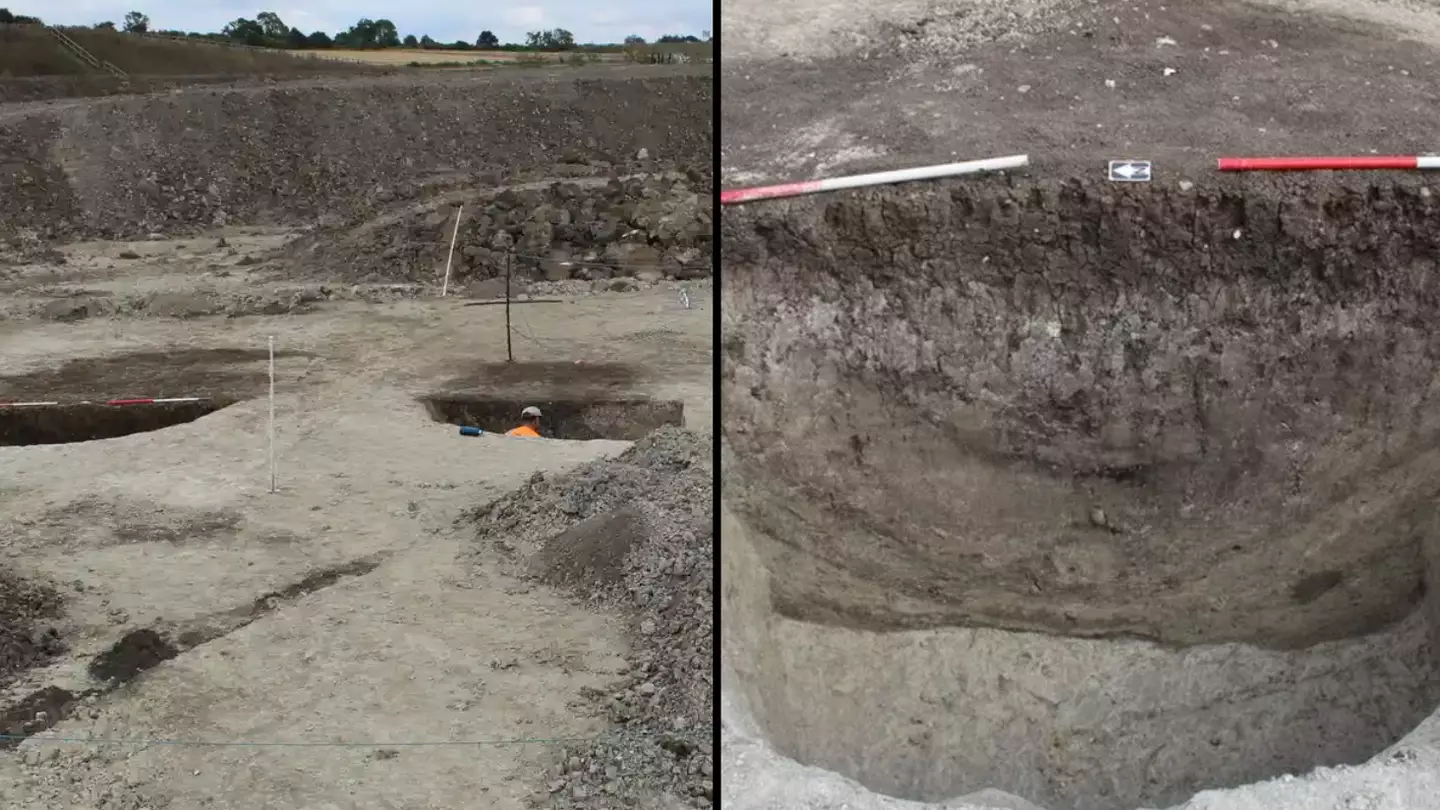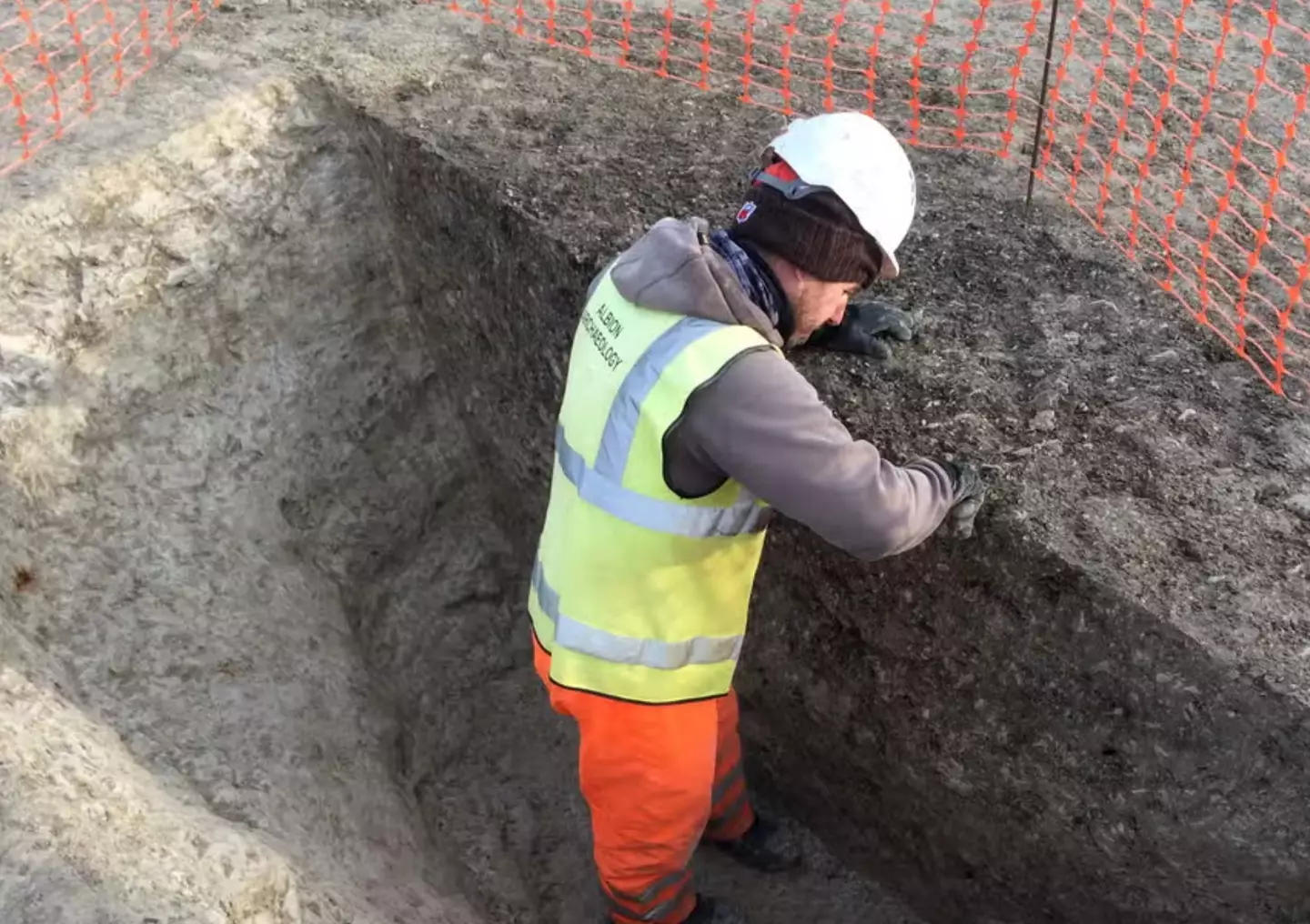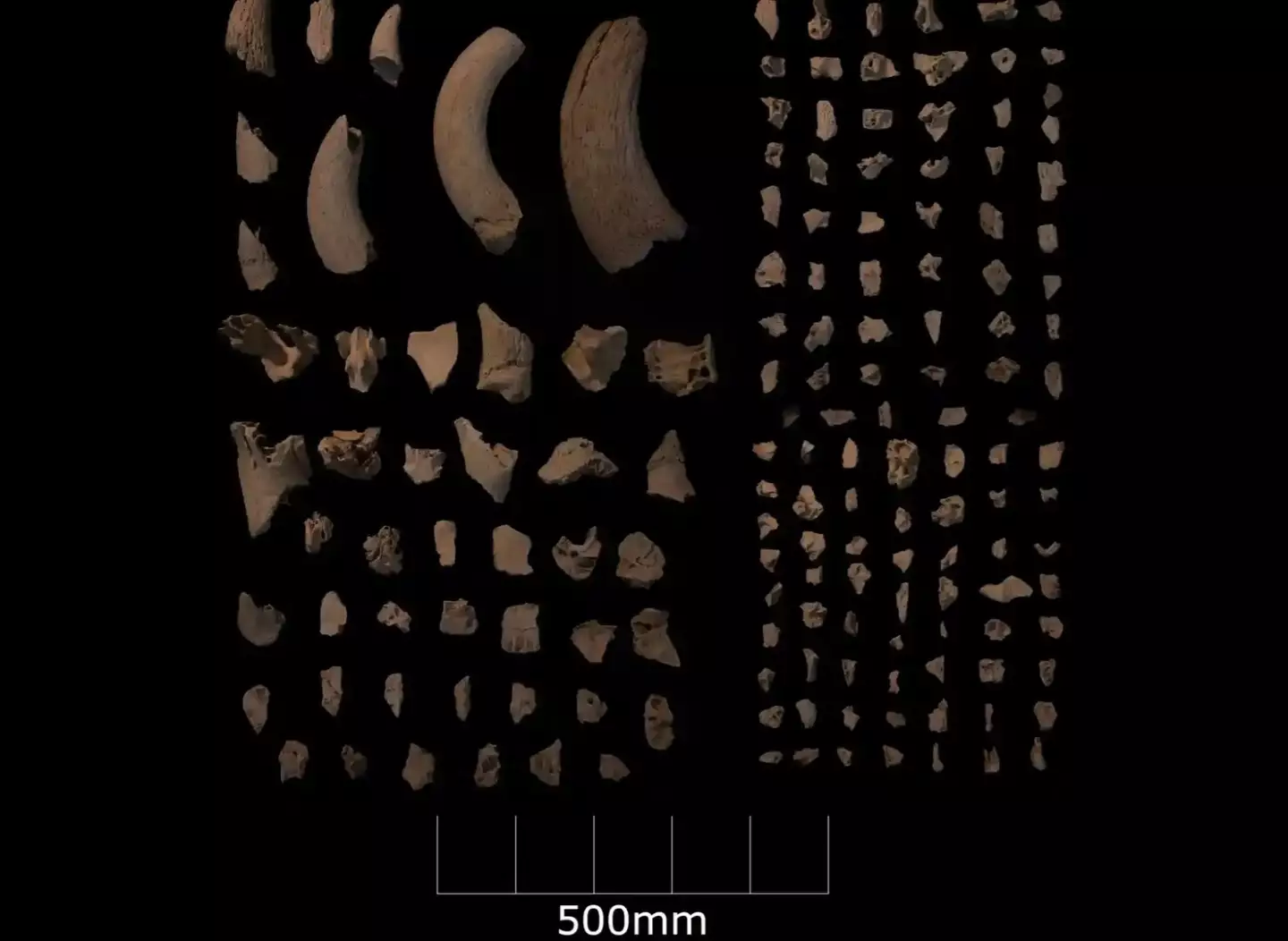
Archaeologists have been stumped after coming across two huge prehistoric sites near London.
Experts uncovered pits in Linmere, Bedfordshire, which they believe date all the way back to the Middle Ages.
The two separate spots were discovered by Museum of London Archaeology (MOLA) and Albion Archaeology.
Advert
It's thought they were originally dug in late Mesolithic period, about 9,000 to 6,000 years ago.
The 25 pits, which measure 5m wide and 1.85m deep, have since been labelled as a 'nationally important prehistoric site'.
Archaeologists believe, due to the shape of the pits, that they were created by a group of nomadic hunter-gatherers and would have taken a lot of time to dig.
However, it's unclear as yet why they would have dug so many of them at the time, with the pits stretching out in long lines.

Writing about the find, professor Joshua Pollard from Southampton University said: “The Linmere Mesolithic pits are a very exciting discovery.
Advert
"While we know of other large and enigmatic pits dug by hunter-gatherers from elsewhere in Britain, including at Stonehenge, the Linmere pits are striking because of their number and the wide area they cover."
Inside a few of the pits, researchers have even managed to find some animal bones, which they believe are a 'crucial source of evidence'.
For example, remains of aurochs, a wild species of cattle, show that prehistoric civilisations would have eaten them.
Yvonne Wolframm-Murray, a project officer at Mola, said it was a huge surprise to everyone involved.
Advert
“We knew there was archaeology, but didn’t initially know we had Mesolithic pits until the radiocarbon dates came back," she said.
"It’s very exciting … There’s only a handful of known other sites with pits that are comparable, certainly quantity-wise."

Though there are a few, these kinds of vast Mesolithic sites are said to be 'very rare' in the UK, with previous digs only producing items like flint tools.
Advert
The team working on the sites believe that the effort needed to create them would suggest some kind of spiritual importance.
They are now looking into whether they are aligned with any major celestial events.
Wolframm-Murray said: “During the Mesolithic period, ice sheets covering much of the country retreated and sea levels rose, cutting off Britain from mainland Europe.
"This was a crucial time of transformation in the UK’s past, and studying a site where people made such a mark on the landscape could have far-reaching impacts on how archaeologists understand these ancient communities."
Advert
Adding: "This work will reveal the environment these people lived in, and hopefully answer the question ‘what were these pits for?’”
Featured Image Credit: MOLA